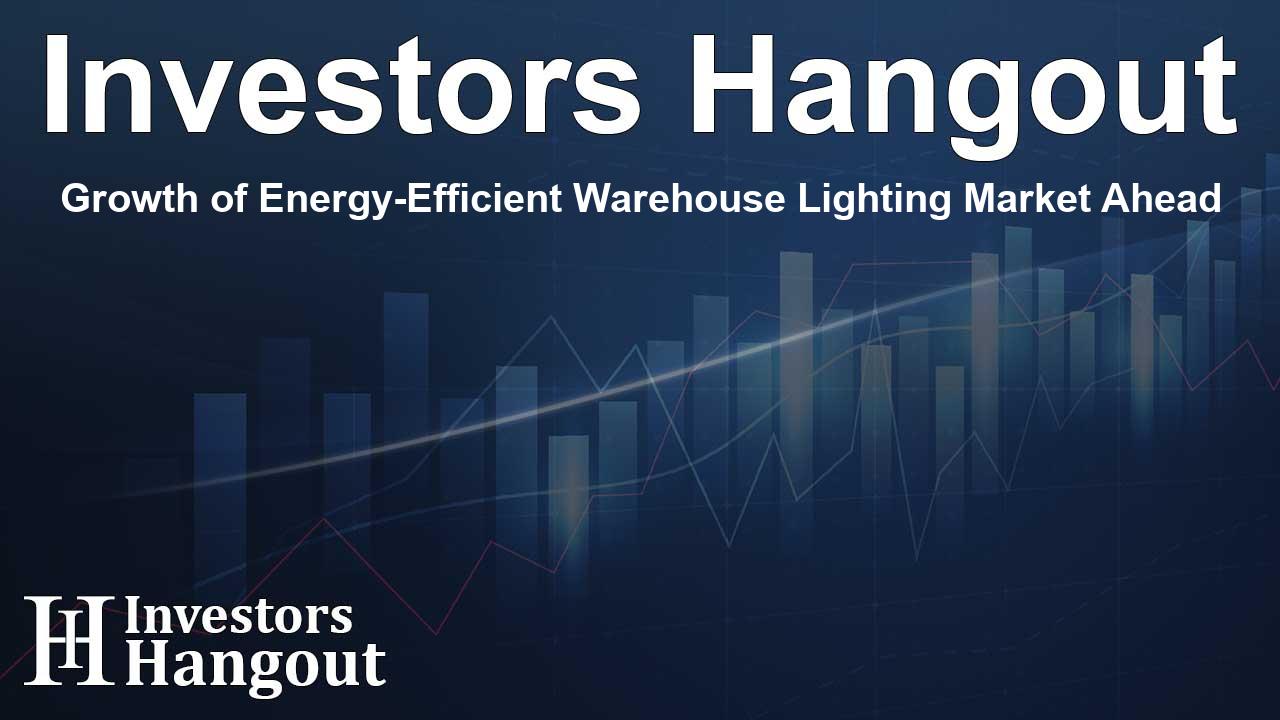Growth of Energy-Efficient Warehouse Lighting Market Ahead

Overview of the Energy-Efficient Warehouse Lighting Market
The energy-efficient warehouse lighting system market is on an impressive growth trajectory, projected to reach $42.5 billion by 2033. The industry is witnessing a compound annual growth rate (CAGR) of 12.5% from the baseline figure of $14.0 billion in 2023. This rising demand for energy-efficient lighting solutions resonates with a broader global trend towards sustainability and the minimizing of energy consumption.
Drivers of Market Expansion
As businesses increasingly prioritize energy conservation, the need for efficient lighting solutions in warehouses cannot be overstated. In this era of rising energy costs and environmental awareness, energy-efficient lighting not only cuts expenses but also helps corporations adhere to stringent environmental regulations. Common types of these lighting systems include High-Intensity Discharge Lamps, Linear Fluorescent Lamps, and particularly, Light Emitting Diodes (LED), which are gaining prominence.
LED Technology: The Game Changer
Among the various types of lighting solutions, LEDs stand out due to their versatility and efficiency. They can be finely tuned for brightness and are compatible with advanced lighting control systems, which include features such as motion sensors and daylight harvesting. This adaptability facilitates optimized lighting conditions within warehouses, directly impacting productivity and safety.
Commercial Applications Leading the Way
In the commercial sector, efficient lighting systems enhance operational efficiency and reduce operational costs. These innovative lighting solutions are primarily tailored for spaces like retail environments and offices. With the increasing realization of their benefits, more warehouse operators are shifting towards implementing advanced lighting systems that not only save energy but also improve employee well-being.
Regional Insights
Asia-Pacific is emerging as a dominant region in the energy-efficient warehouse lighting market. Rapid industrial growth coupled with urbanization in countries such as China and India is driving investments in warehouse infrastructure. Businesses within these regions are progressively adopting energy-saving lighting technologies due to government incentives aimed at promoting sustainable practices.
Challenges Faced by the Industry
Despite the numerous advantages of energy-efficient lighting systems, some barriers hinder their universal adoption. The significant upfront costs associated with transitioning to these systems deter many businesses. Furthermore, a lack of awareness about the long-term benefits of such investments can limit market growth. To combat these challenges, continued efforts toward education and government support for energy-efficient initiatives are vital.
Market Players Fueling Growth
The competition in the energy-efficient warehouse lighting market is intensifying, with numerous players striving to improve their market presence. Major companies, such as Osram, General Electric, and Philips Lighting, are engaged in innovative product development and strategic expansions. These companies often employ various strategies, including partnerships and collaborations, to enhance their offerings and respond to market demands.
Recent Developments
Companies are actively exploring new horizons; for instance, Acuity Brands recently expanded its product line to cater to the refueling sector, showcasing their adaptability to consumer needs. Similarly, Hydrel has introduced new outdoor lighting solutions, demonstrating continuous innovation in the market.
Looking Ahead
With the growing recognition of the benefits associated with energy-efficient lighting systems, the market is expected to continue on this upward trajectory. The push for sustainability from both consumers and governments is primed to fuel further advancements in lighting technology. Our collective commitment to reducing carbon footprints will play a significant role in shaping the future landscape of warehouse operations.
Frequently Asked Questions
What is the projected growth of the energy-efficient warehouse lighting market?
The market is expected to reach $42.5 billion by 2033, growing at a CAGR of 12.5% from 2024.
What are the main types of lighting systems in use?
Main types include High-Intensity Discharge Lamps, Linear Fluorescent Lamps, and LEDs, which are the most popular due to their high efficiency.
What regions are leading in market share?
Asia-Pacific is anticipated to hold a dominant share due to rapid industrialization and increased demand for energy-efficient solutions.
What challenges impact the adoption of energy-efficient lighting systems?
The high initial investment and limited awareness about the long-term benefits are significant challenges facing broader adoption.
Who are the key players in the market?
Key players include Osram, Philips Lighting, General Electric, and Acuity Brands, among others, who are actively innovating and expanding their market presence.
About Investors Hangout
Investors Hangout is a leading online stock forum for financial discussion and learning, offering a wide range of free tools and resources. It draws in traders of all levels, who exchange market knowledge, investigate trading tactics, and keep an eye on industry developments in real time. Featuring financial articles, stock message boards, quotes, charts, company profiles, and live news updates. Through cooperative learning and a wealth of informational resources, it helps users from novices creating their first portfolios to experts honing their techniques. Join Investors Hangout today: https://investorshangout.com/
Disclaimer: The content of this article is solely for general informational purposes only; it does not represent legal, financial, or investment advice. Investors Hangout does not offer financial advice; the author is not a licensed financial advisor. Consult a qualified advisor before making any financial or investment decisions based on this article. The author's interpretation of publicly available data shapes the opinions presented here; as a result, they should not be taken as advice to purchase, sell, or hold any securities mentioned or any other investments. The author does not guarantee the accuracy, completeness, or timeliness of any material, providing it "as is." Information and market conditions may change; past performance is not indicative of future outcomes. If any of the material offered here is inaccurate, please contact us for corrections.